Hyundai i30 vs Skoda Fabia – Which model is better for everyday use?
Everyday use, family trips or long-distance drives – here’s where the differences show.
Discover whether Hyundai i30 or Skoda Fabia fits your lifestyle better.
Costs and Efficiency:
Looking at overall running costs, both models reveal some interesting differences in everyday economy.
Skoda Fabia has a convincingly advantage in terms of price – it starts at 16900 £, while the Hyundai i30 costs 24000 £. That’s a price difference of around 7114 £.
Fuel consumption also shows a difference: Skoda Fabia manages with 4.90 L and is therefore slightly more efficient than the Hyundai i30 with 5.70 L. The difference is about 0.80 L per 100 km.
Engine and Performance:
Power, torque and acceleration are the classic benchmarks for car enthusiasts – and here, some clear differences start to show.
When it comes to engine power, the Skoda Fabia has a clearly perceptible edge – offering 177 HP compared to 140 HP. That’s roughly 37 HP more horsepower.
In acceleration from 0 to 100 km/h, the Skoda Fabia is clearly perceptible quicker – completing the sprint in 7.40 s, while the Hyundai i30 takes 9.60 s. That’s about 2.20 s faster.
In terms of top speed, the Skoda Fabia performs slightly better – reaching 228 km/h, while the Hyundai i30 tops out at 197 km/h. The difference is around 31 km/h.
There’s also a difference in torque: Hyundai i30 pulls barely noticeable stronger with 253 Nm compared to 250 Nm. That’s about 3 Nm difference.
Space and Everyday Use:
Beyond pure performance, interior space and usability matter most in daily life. This is where you see which car is more practical and versatile.
Both vehicles offer seating for 5 people.
In curb weight, Skoda Fabia is to a small extent lighter – 1143 kg compared to 1291 kg. The difference is around 148 kg.
In terms of boot space, the Hyundai i30 offers minimal more room – 395 L compared to 380 L. That’s a difference of about 15 L.
In maximum load capacity, the Hyundai i30 performs hardly perceptible better – up to 1301 L, which is about 111 L more than the Skoda Fabia.
When it comes to payload, Hyundai i30 a bit takes the win – 509 kg compared to 437 kg. That’s a difference of about 72 kg.
Who wins the race?
The Skoda Fabia proves to be outperforms in nearly all aspects and therefore becomes our DriveDuel Champion!
Skoda Fabia is the better all-rounder in this comparison.
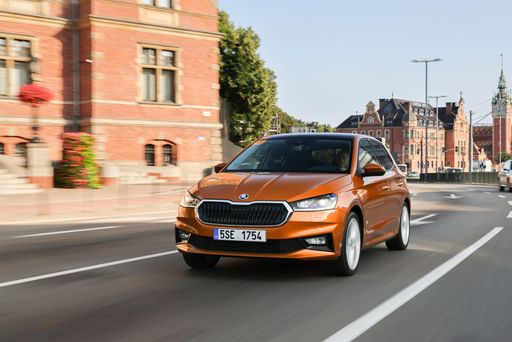 @ Škoda Auto a.s. / Škoda Storyboard
@ Škoda Auto a.s. / Škoda Storyboard
Skoda Fabia
Hyundai i30
The Hyundai i30 proves that sensible can also be stylish, offering a confident driving character wrapped in neat, modern design. It serves up a roomy, well-equipped cabin and composed ride that make everyday motoring feel like a clever purchase rather than a compromise.
details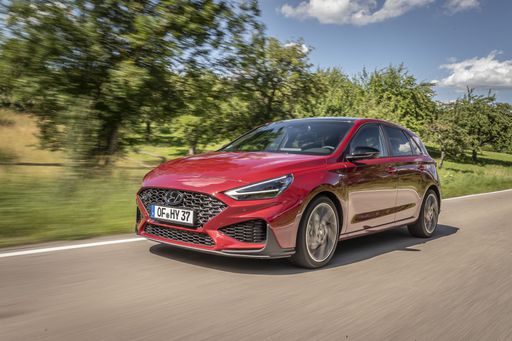 @ Hyundai Motor Company
@ Hyundai Motor Company
 @ Hyundai Motor Company
@ Hyundai Motor Company
 @ Hyundai Motor Company
@ Hyundai Motor Company
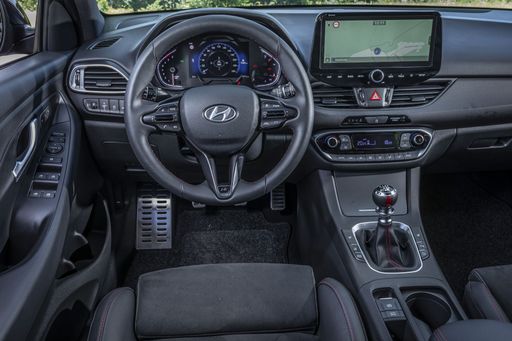 @ Hyundai Motor Company
@ Hyundai Motor Company
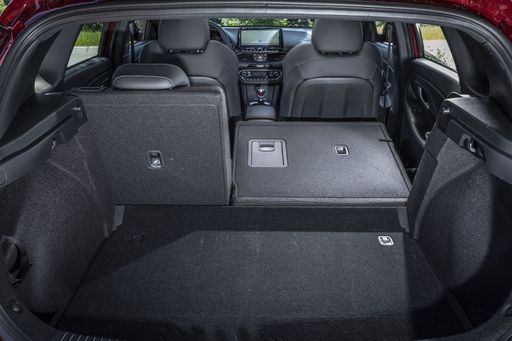 @ Hyundai Motor Company
@ Hyundai Motor Company
Skoda Fabia
The Skoda Fabia is a clever, no-nonsense small car that turns everyday chores into a breeze thanks to smart packaging and a surprisingly roomy cabin. It won’t set your pulses racing, but it’s a consistently sensible choice — reliable, easy to live with and blessed with a few neat tricks that make city life less faff.
details @ Škoda Auto a.s. / Škoda Storyboard
@ Škoda Auto a.s. / Škoda Storyboard
 @ Škoda Auto a.s. / Škoda Storyboard
@ Škoda Auto a.s. / Škoda Storyboard
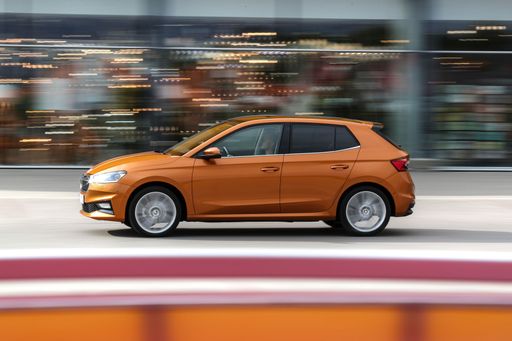 @ Škoda Auto a.s. / Škoda Storyboard
@ Škoda Auto a.s. / Škoda Storyboard
 @ Škoda Auto a.s. / Škoda Storyboard
@ Škoda Auto a.s. / Škoda Storyboard
 @ Škoda Auto a.s. / Škoda Storyboard
@ Škoda Auto a.s. / Škoda Storyboard
 @ Hyundai Motor Company
@ Hyundai Motor Company
|
 @ Škoda Auto a.s. / Škoda Storyboard
@ Škoda Auto a.s. / Škoda Storyboard
|
|
|
|
Costs and Consumption |
|
|---|---|
|
Price
24000 - 29300 £
|
Price
16900 - 30500 £
|
|
Consumption L/100km
5.7 - 6 L
|
Consumption L/100km
4.9 - 5.6 L
|
|
Consumption kWh/100km
-
|
Consumption kWh/100km
-
|
|
Electric Range
-
|
Electric Range
-
|
|
Battery Capacity
-
|
Battery Capacity
-
|
|
co2
130 - 136 g/km
|
co2
112 - 126 g/km
|
|
Fuel tank capacity
50 L
|
Fuel tank capacity
40 L
|
Dimensions and Body |
|
|---|---|
|
Body Type
Hatchback
|
Body Type
Hatchback
|
|
Seats
5
|
Seats
5
|
|
Doors
5
|
Doors
5
|
|
Curb weight
1291 - 1407 kg
|
Curb weight
1143 - 1278 kg
|
|
Trunk capacity
395 L
|
Trunk capacity
380 L
|
|
Length
4340 mm
|
Length
4108 - 4137 mm
|
|
Width
1795 mm
|
Width
1780 mm
|
|
Height
1455 mm
|
Height
1458 - 1461 mm
|
|
Max trunk capacity
1301 L
|
Max trunk capacity
1190 L
|
|
Payload
463 - 509 kg
|
Payload
402 - 437 kg
|
Engine and Performance |
|
|---|---|
|
Engine Type
Petrol, Petrol MHEV
|
Engine Type
Petrol
|
|
Transmission
Manuel, Automatic
|
Transmission
Manuel, Automatic
|
|
Transmission Detail
Manual Gearbox, Dual-Clutch Automatic
|
Transmission Detail
Manual Gearbox, Dual-Clutch Automatic
|
|
Drive Type
Front-Wheel Drive
|
Drive Type
Front-Wheel Drive
|
|
Power HP
100 - 140 HP
|
Power HP
80 - 177 HP
|
|
Acceleration 0-100km/h
9.6 - 13.1 s
|
Acceleration 0-100km/h
7.4 - 15.7 s
|
|
Max Speed
178 - 197 km/h
|
Max Speed
175 - 228 km/h
|
|
Torque
172 - 253 Nm
|
Torque
93 - 250 Nm
|
|
Number of Cylinders
3 - 4
|
Number of Cylinders
3 - 4
|
|
Power kW
74 - 103 kW
|
Power kW
59 - 130 kW
|
|
Engine capacity
998 - 1482 cm3
|
Engine capacity
999 - 1498 cm3
|
General |
|
|---|---|
|
Model Year
2024
|
Model Year
2025
|
|
CO2 Efficiency Class
D, E
|
CO2 Efficiency Class
D, C
|
|
Brand
Hyundai
|
Brand
Skoda
|
What drive types are available for the Hyundai i30?
Available configurations include Front-Wheel Drive.
The prices and data displayed are estimates based on German list prices and may vary by country. This information is not legally binding.
